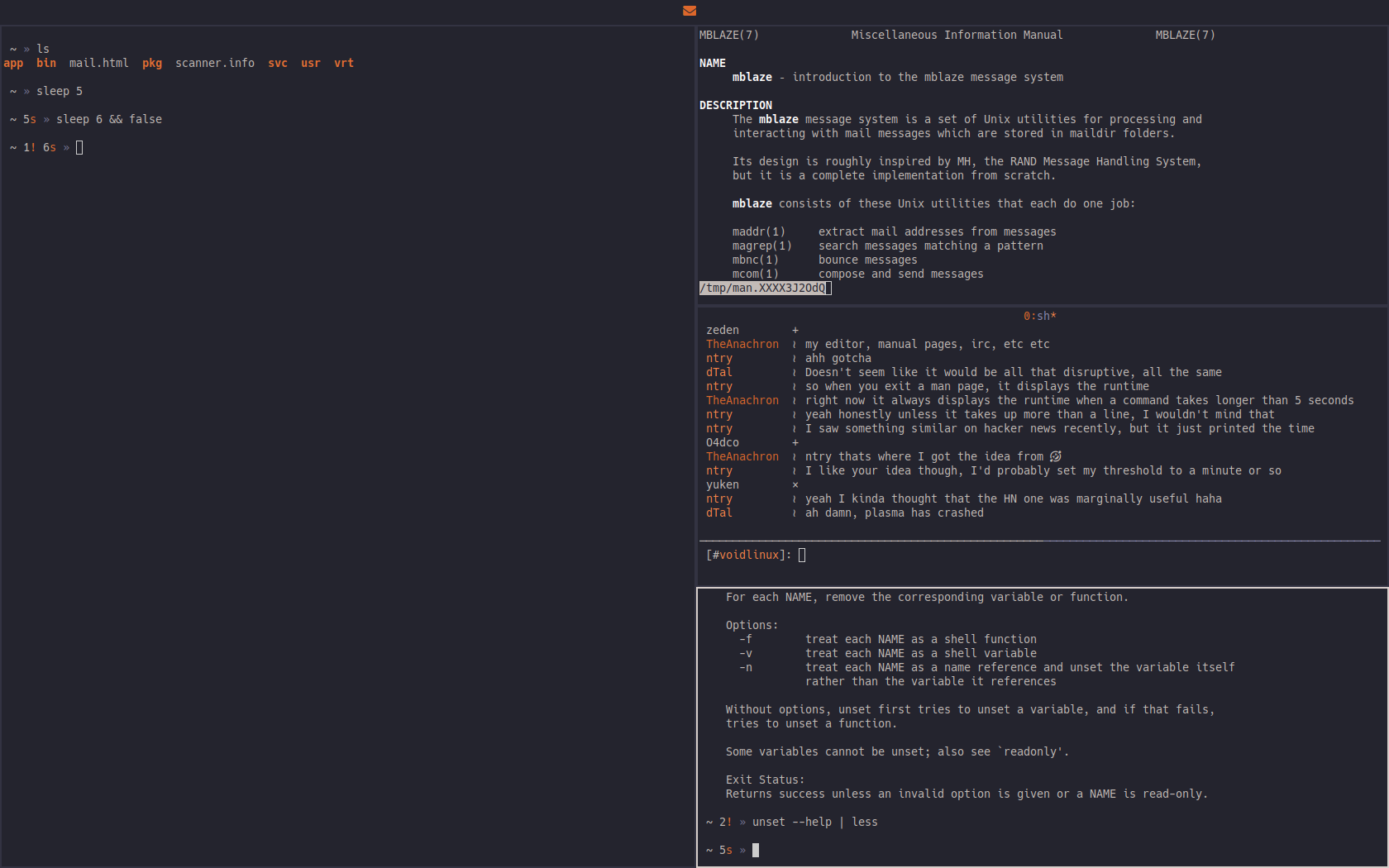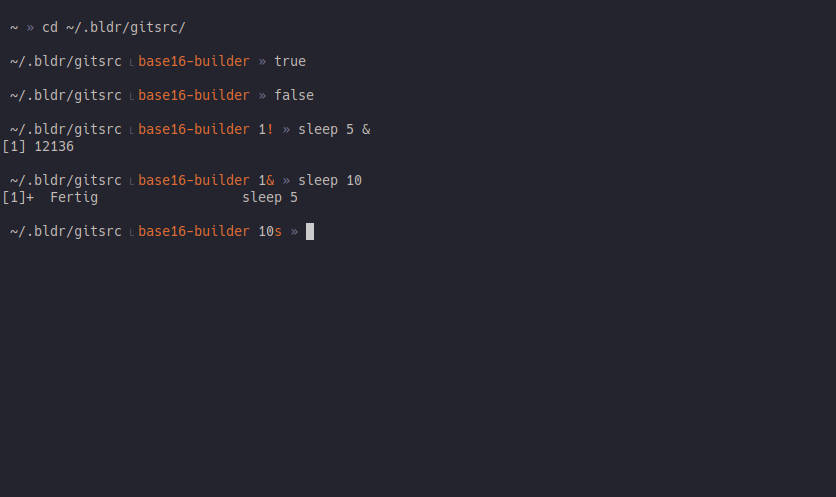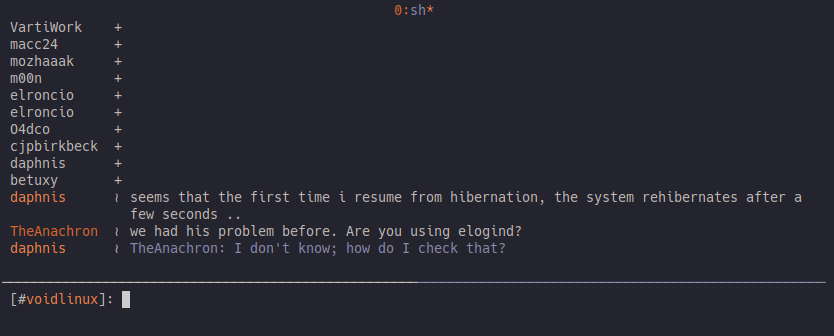Diving into the Void
Written by Anachron on 2018-08-24
Read the article or go back.
# The WM, StatusBar, Shell and Editor
# Window-Manager
After fiddling around with i3wm, bspwm and wmutils I’ve now come to my new favorite WM: cwm.
cwm is not only portable and very well written but also very fast.
It allows you to use the mouse and keyboard for window moving/resizing/selecting and can be configured via a rc-file.
In my personal testing and daily working with the WM I’ve come to the conclusion that cwm is what I’ve always wanted.
cwm supports window groups, easy key binding, reloading via HUP signal and very fast execution whatever you command.

# Status-Bar
I’ve come to the conclusion that the less you clutter your statusbar with, the more productive you are.
This concept you can also find in my $SHELL, $EDITOR and $IRC setups respectively.
For my statusbar I use lemonbar. I’ve written a ton of scripts to monitor important system events/statistics.
Whenever something urgent is up, my lemonbar will display a symbol on the desktop indicating something being urgent.
Normally when nothing is up my statusbar is empty.
# Shell
I’m still on bash but rewrote most of my scripts to be posix compatible.
mksh is my destination, will need a bit more testing though.
My $SHELL-prompt tries to be both minimal and functional. The prompt will show me:
- The current working directory (
$PWD) - The git branch and if it has any non-commited changes
- Return code of the last run command (
$?), if not 0 - Amount of jobs in the background, if any
- Amount of .env-variables that are injected into the env, if any
- Runtime of last run program when
>= 5.
When the prompt gets too long (>= 30 chars) the user input will be asked in a new line.
The following image contains a few examples of my shell prompt.
- The first prompt is minimal display
- The second prompt is minimal with truncated path (auto for long paths) + git status
- The third prompt shows how rc = 0 is being ignored
- The fourth prompt shows how rc > 0 are being displayed
- The fith prompt shows how to display background jobs active in current
tty. - The last prompt shows the runtime of a program run for 10 seconds

# Editor
My default $EDITOR is vim and I haven’t customized it much.
Since I am learning rust I have installed RLS (Rust Language Server) and that’s it.

# IRC, Mail, Browsing and Gaming
# IRC
I am using self-written wrappers around ii. The setup includes a read-panel, write-panel and nicklist. Bound together by tmux.

Totally digging the mimalism, I’ve come to setup my mail as the following:
I’ve written some custom script for a mail browser based on fzf.

# Browsing
I’m boring and until qutebrowser has plugins I will stick to firefox.
# Media and Folders
I’m playing music or videos via mpv. The best player there is. Streams and alike are also viewable through it.
I have the following directory tree:
/home/anon
├── app
├── bin
├── usr
├── vos
└── vrt
5 directories, 0 files
App contains all the cnf (configs), dat (data) and log (logs).
For everything that needs to be secure and cannot reside in cnf (like ssh-keys, passwords, API-keys, etc),
there is sec (secure).
/home/anon/app
├── cnf
├── dat
├── log
└── sec
4 directories, 0 files
Inside the usr (user-related) folder are:
/home/anon/usr
├── cal
├── crd
├── doc
├── dsk
├── irc
├── med
├── mls
├── prj
├── pub
└── tmp
10 directories
cal (calendars), crd (cards), doc (documents), dsk (desktop), irc (irc-data),
med (media likes aud (audio), img (images) etc), mls (mails), prj (projects),
pub (public files) and tmp (temporary files like dls (downloads))
Comments (disabled for now)